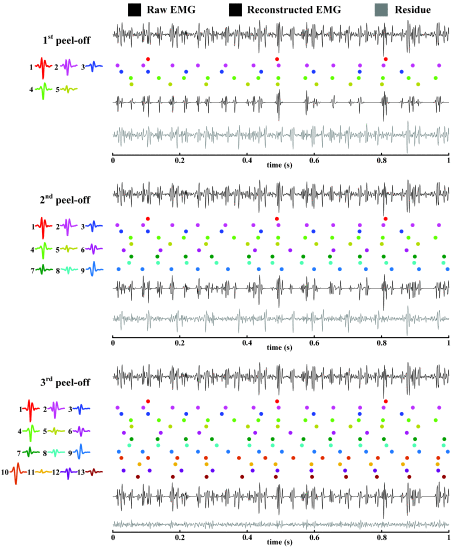
This paper presents a novel two-source approach for validating the performance of high-density surface electromyogram (EMG) decomposition. The approach was developed taking advantage of surface EMG characteristics of amyotrophic lateral sclerosis (ALS). High-density surface EMG data from ALS patients can be divided to the sparse data set and the interference data set, with the former decomposed by expert visual inspection while the latter independently decomposed by the surface EMG decomposition algorithm. The agreement of the decomposition yields from the two data sets can be quantified for evaluating the surface EMG decomposition performance. The novel validation approach was performed for a recently developed method called automatic progressive FastICA peel-off (APFP) for high-density surface EMG decomposition. The APFP framework was used to automatically decompose high-density surface EMG signals recorded from the first dorsal interosseous muscle of ALS subjects. The common motor units independently decomposed from the interference data set and the sparse data set demonstrated an average matching rate of 99.18% ± 1.11%. The characteristics of the ALS surface EMG also facilitate a step by step illustration of the APFP framework for high-density surface EMG decomposition. The novel approach presented in this paper can supplement conventional two-source validation for accuracy assessment of decomposed motor units from experimental signals, which is essential for development of surface EMG decomposition methods.

